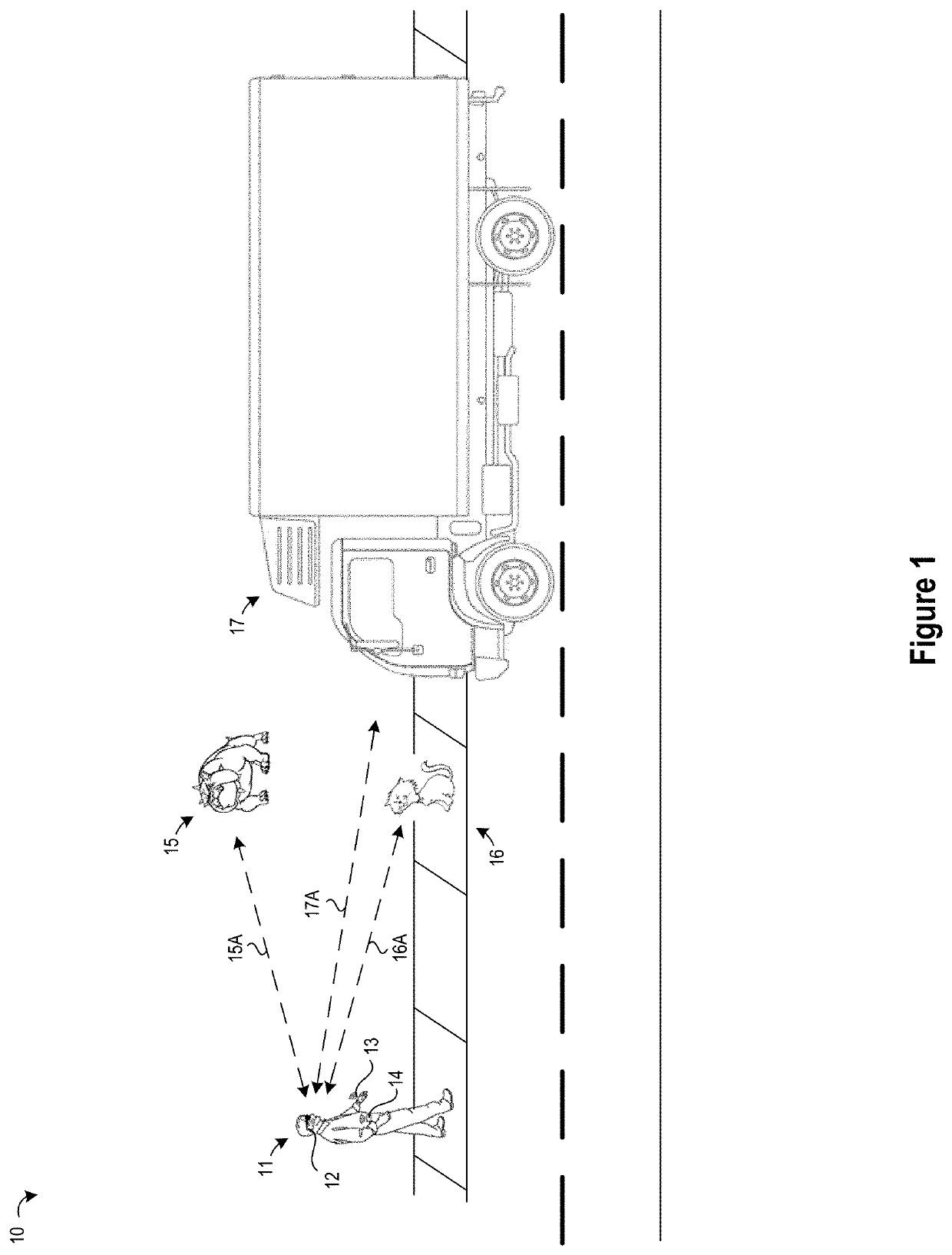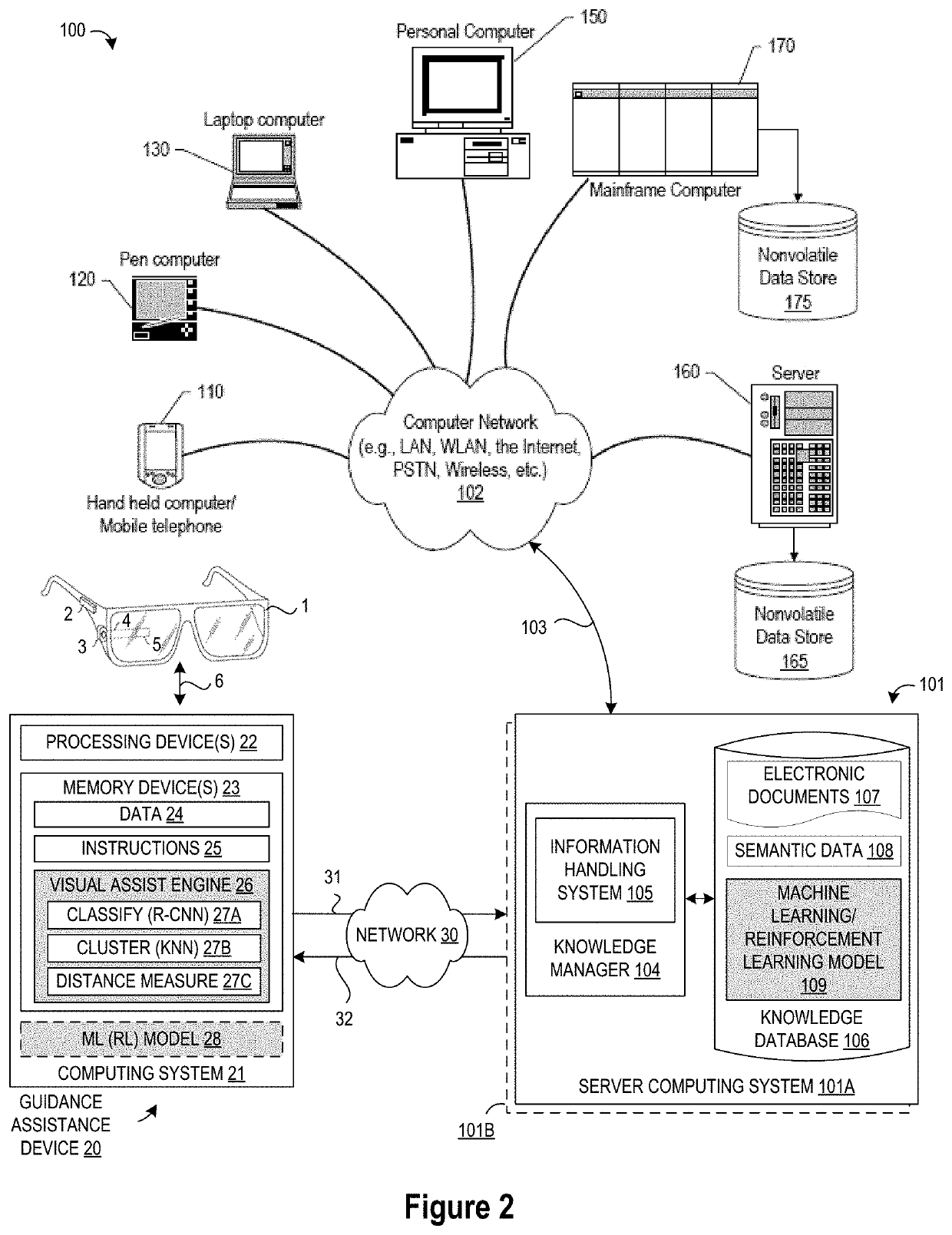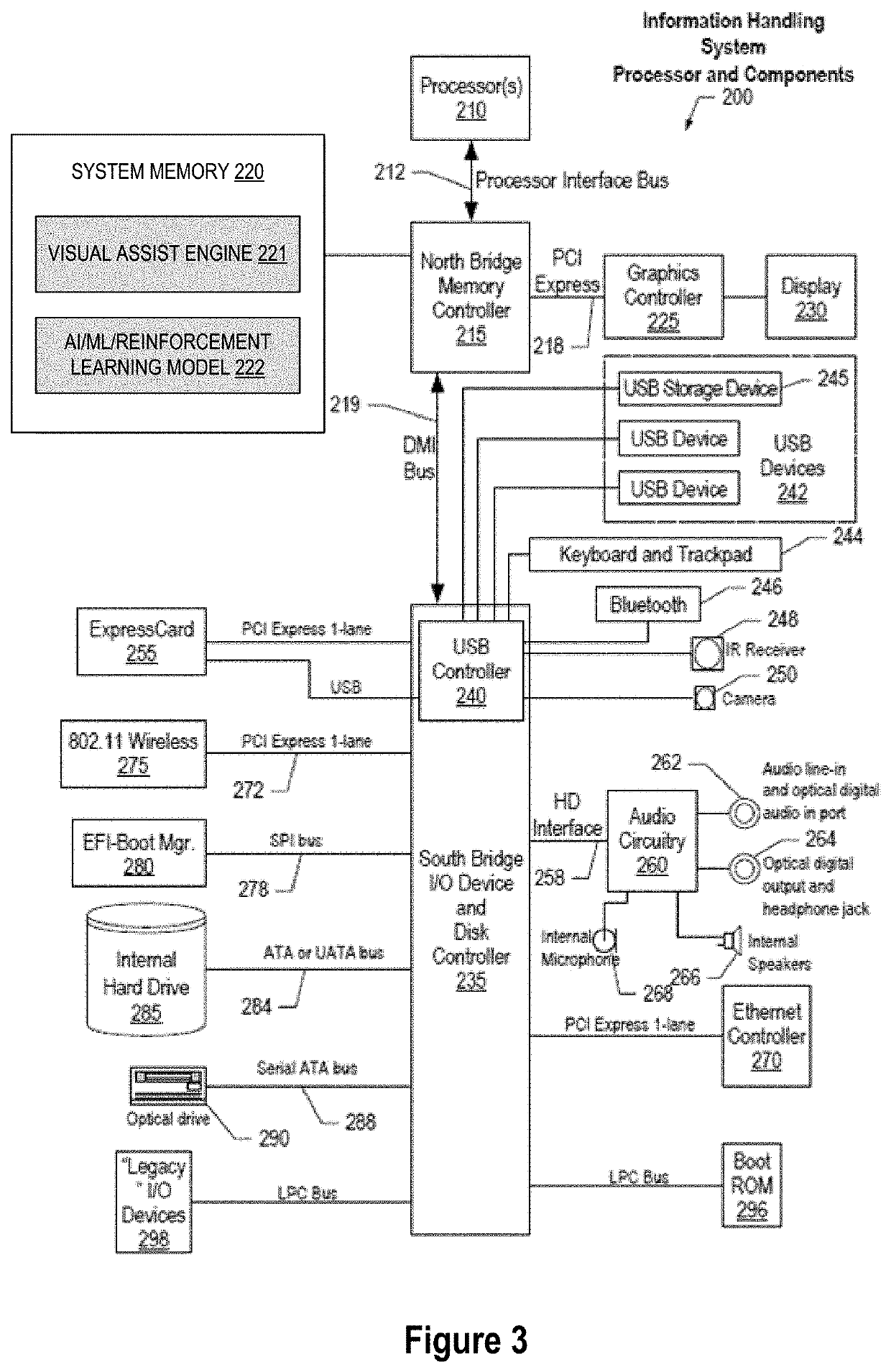Assistive Mechanism via Edge Device Personalization
a technology of personalization and edge devices, applied in the field of personalization of edge devices, can solve the problems of deficient practical and/or operational level of existing solutions for guiding sensory impaired people in navigating and interacting with their environment, and achieve optimal navigation and aiding navigation
- Summary
- Abstract
- Description
- Claims
- Application Information
AI Technical Summary
Benefits of technology
Problems solved by technology
Method used
Image
Examples
Embodiment Construction
[0009]The present invention may be a system, a method, and / or a computer program product. In addition, selected aspects of the present invention may take the form of an entirely hardware embodiment, an entirely software embodiment (including firmware, resident software, micro-code, etc.) or an embodiment combining software and / or hardware aspects that may all generally be referred to herein as a “circuit,”“module” or “system.” Furthermore, aspects of the present invention may take the form of computer program product embodied in a computer readable storage medium (or media) having computer readable program instructions thereon for causing a processor to carry out aspects of the present invention. Thus embodied, the disclosed system, a method, and / or a computer program product is operative to improve the functionality and operation of a cognitive question answering (QA) systems by efficiently providing more accurate training QA pairs.
[0010]The computer readable storage medium can be ...
PUM
 Login to View More
Login to View More Abstract
Description
Claims
Application Information
 Login to View More
Login to View More - R&D
- Intellectual Property
- Life Sciences
- Materials
- Tech Scout
- Unparalleled Data Quality
- Higher Quality Content
- 60% Fewer Hallucinations
Browse by: Latest US Patents, China's latest patents, Technical Efficacy Thesaurus, Application Domain, Technology Topic, Popular Technical Reports.
© 2025 PatSnap. All rights reserved.Legal|Privacy policy|Modern Slavery Act Transparency Statement|Sitemap|About US| Contact US: help@patsnap.com



